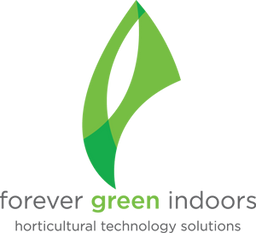The Teros 12 Sensor, SOLUS Spot Meter App and EC Learning about EC
Electrical conductivity is a measurement of salt levels in plant growing mediums like soil, coco coir or rockwool. Adding nutrients to your soil increases electrical activity. Adding water washes out the salts. EC is one of three measurements the SOLUS displays.
Teros 12 Sensor Measurements
- water content: %
- temperature: F
- electrical conductivity: ds/m
For predictable high yielding results these variables must be managed carefully.
Why EC Matters
EC tracks nutrients from fertilizer. High nutrient levels will block the plants ability to absorb water.
Low nutrient levels allows the plant to absorb water without providing nutrition to maximize growth rates.
Avoiding the Guess Game
- Maintaining healthy plants can be a guessing game that can result in lower quality crops.
- Its difficult to know the best time to water and feed plants.
- It can take years of experience with one crop to know by looking at a plant whether or not it is healthy.
EC and Water Content Sensors
The Teros 12 EC ds/m Sensor.
SOLUS App displays EC which it reads from the Teros 12 sensor placed in your grow medium.
The Teros sensor passes electrical current between the two outer prongs. The rate of transmission displays in ds/m. Higher salt levels increase ds/m readings.
This is how the SOLUS helps to gain an understanding of nutrient levels in soil.
Teros 12 WC Sensor
The Teros 12 sensor measures water content too.The sensor creates an electromagnetic field and measures it with a high degree of sensitivity in the surrounding growing medium. The value is converted to Volumetric Water Content (VWC) and shows on the SOLUS App as a %.
Understanding volumetric water content levels helps to set watering schedules as the growing medium becomes saturated with water then dries out.
SOLUS App Download links (phone only)
A Deeper Dive
Growing mediums and the Teros 12
Choosing a grow medium depends on the grow space set up for irrigation and drainage as well as the personal preference of the gardener and the desired plant size and shape.
Natural soils, coco coir, and rockwool are several popular choices. Each one has a different rate of drying after watering and each medium has different size options that a gardener chooses from.
Pots and Containers
Plastic or other hard containers like raised beds are popular because they dry slower and contain the roots entirely. The Teros 12 can be used in hard containers by cutting a void in the side.
The SOLUS includes a template for where the sensor should be placed. We use a hole saw to cut an entry into the pot for the sensor. The sensor is then left in this pot for the entire cycle. The Teros 12 is desiged to be permanatly buried in fields and orchards. Leaving it in a single location for a crop cycle works fine.
Cloth Grow Bags
The Teros 12 sensor can measure any combination of grow mediums and containers.
Cloth bags with coco or soil are popular and easy to work with.
We've settled on 3lb fabric bags and use the SOLUS template to position the sensor. We move the sensor around early in the cycle to spot any issues with our drip irrigation emitters. Later in the cycle we leave the Teros 12 sensor in place and take spot reading which we save to our phone for reference.
Rockwool Cubes
Rockwool has become popular due to the fact that it is easy to work with, cleaner than soil or coco, and is the most stable medium to use in terms of water content and drying speed. It is also the simplest to take readings from using the Teros 12.
We are currently experimenting with 4" rockwood cubes in 3 gallon cloth bags. We add coco to fill out the void spaces around the 4" cube. We've had great success with this approach and the cubes retain water longer. This has cut our irrigation cycles in half.
Our Test Garden
We committed to running full grow cycles with the SOLUS to see what we could learn.
First Hand Experience
We have a test garden in our Seattle showroom. We've been using the Teros 12 and SOLUS app to grow a dozen cherry tomato plants (we're limited in this location). We've used the same grow strategies cannabis growers use in large scale gardens.
We use the Teros 12 daily to read the WC and EC levels in 3 gallon fabric bags filled with coco surrounding 4 inch rockwool cubes. The plants were started from seed.
We built watering and feeding times using the SOLUS data.
We adjust the schedules every week. As the plants grow larger they demand more water and nutrition. We would have no way to know the correct level of nutrients without the Teros 12 and SOLUS.
Using the Teros 12 In Your Garden
Bulk EC versus Pore EC
Bulk EC: EC measured in solution or runoff is measured using a different sensor than the Teros 12. This measurement is called Bulk EC. (The Teros cannot be used to measure EC outside of the growing medium.)
We recommend that you have a sensor for Bulk EC as well.
Bulk EC is measured with a sensor calibrated to read in ms/cm which is a measure of liquid electrcial conductivity.
Runoff EC levels do not accurately predict the EC level in the grow medium because of chemical reactions in the medium itself, the amount of water that the growing medium can hold and the rate of drying back.
Pore EC: The Teros 12 sensor measures EC levels using a Pore Water calibrated measurement in ds/m, a measurement in growing mediums. Ds/m and ms/cm measurements are equivalent and can be compared 1:1 to each other. Even though each sensor is different.
Bulk EC levels will be higher when nutrients levels are being raised to reach the ideal balance in the grow medium.
EC Levels In Your Grow
Ideal EC levels in soil/soiless are generally as follows;
The study of EC and WC levels is evolving. These are currently the safe zone however gardeners who are experimenting with higher levels during the generative (flowering) phase as they learn how to steer certain strains to maximum crop yield potential. For high performance pulse feeding and watering in rockwool add 6 ds/m to the Flowering EC target levels noted below. This is for advanced gardeners using automated feeding adn watering.
Starts/Clones
• EC levels for seedlings and young veg plants is around .5-.8 ds/m. Stay at this level until the plants develope 6-8 leaf sets and are fully rooted.
Veg
• Increse to 1.1-1.5 ds/m through vegitative phase.
Flowering
• Boost the EC level to 2.0-2.5 ds/m through flowering.
Pre-Flush
• 1.8- 2.2 ds/m through to flush after which point EC measurements are not necessary.
When To Measure EC
Watering and Drying Back Concepts
Grow mediums dry at different rates based on many factors like continer type, volume, plant size and temperature.
Choosing the best time to measure EC during dry-back is important. Measuring immediatly after watering is not recommended becasue EC rises as the medium dries back. Waiting too long won't provide good information on EC levels but it is useful when setting irrigation schedules.
Minimum Water Content
The Teros 12 sensor is most accuate when water content (WC) is above 17%. Levels below 17% confuse the sensor as salts build up around the stainless steel prongs.
Water content in grow mediums below 20% would be extremally low and unhealthy for the plants.
We've experimented with letting rockwood and coco moisture levels go below 20%. They weigh practically nothing, dipping a finger in feels completely dry. And it is nearly impossible to resaturate them to 50% with drip irrigation. If the levels go this low the plant is likely not going to make it.
Maximum Water Content
Choosing the maximum water content level depends on the grow medium's ability to hold water.
Rockwool and Coco Coir have similar moisture content holding ability.
Both are fully saturated at 60% WC and will dry back to about 30%. It is very difficult to get either back to the 60% saturation level with drip irrigation.
When to check WC Levels
Measuring WC helps set watering intervals and amounts. We recommend a low threshold of 35% water content and then re-watering.
We leave the Teros 12 sensor in the same grow container and take readings every hour at two hours after watering to watch the water content move towards 35%. When it does we program the drip system for this length of time, and adjust the minutes of watering.
2 hours dryback + amount of time to dry to 35% = the weekly watering interval.
We keep an eye on the plants with additional WC readings towards the end of the week and if they are stripping the medium of water we increase the minutes of water from our emitters.
The upper threshold depends on the medium, and generally we aim for 45-50% with coco or rockwool before stopping the watering and starting the dry-back.
When to check EC Levels
Generally it is best to check EC between one and two hours after the last watering schedule as the medium will no longer be draining off and the EC level will be stable and the most accurate.
Water / Feed Schedule Setting
After several weeks of mutiple readings per day we program our auto-drip irrigation system to reach 45-50% WC.
Our garden has a dozen 3 gallon pots with a pair of emitters at .5 gph.
We look at the EC levels 1-2 hours later (it does not change much in that time). Then we adjust the fertigation injectors up or down based on the plant phase EC target.
Remember that if you measure EC when WC is below 20% you will not have an accurate number so disregard EC at very low water content levels. And also at fully saturated levels.
Bring the level back to the upper WC threshold and dry-back before measureing EC. Then adjust feeding as required to maintain the EC target.
Flood versus Pluse Watering
EC and WC targets remain the same for either type of watering strategy.
Pulse watering becomes necessary with larger plants to keep the grow medium from drying out too far which is unrecoverable.
Crop Steering - Managing Plant Stress For Yield
This is a topic for another post. Crop steering tactics are used together with pulse watering and feeding schedules to intentionally stress the plant. Cycling between low minimum water levels results in a competitive growth response in the plant which improves yield.







